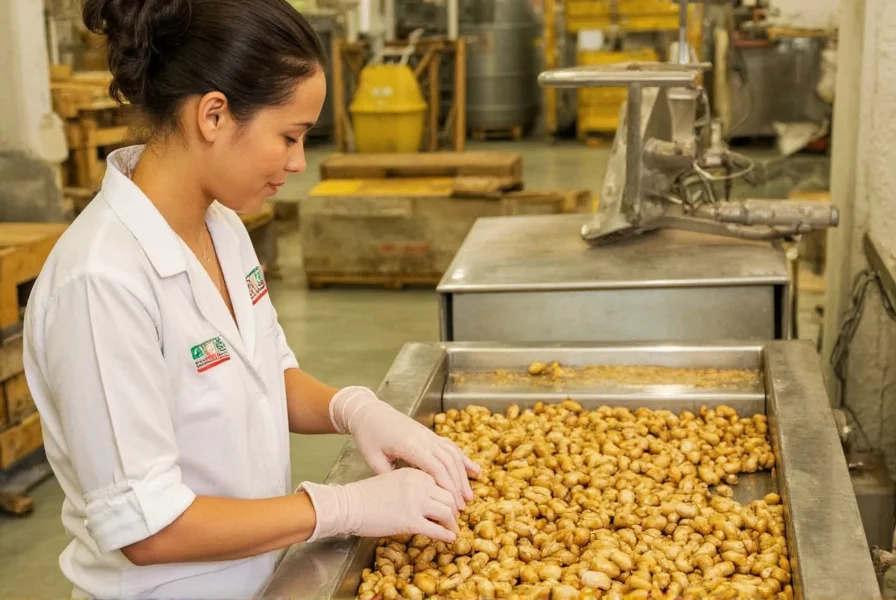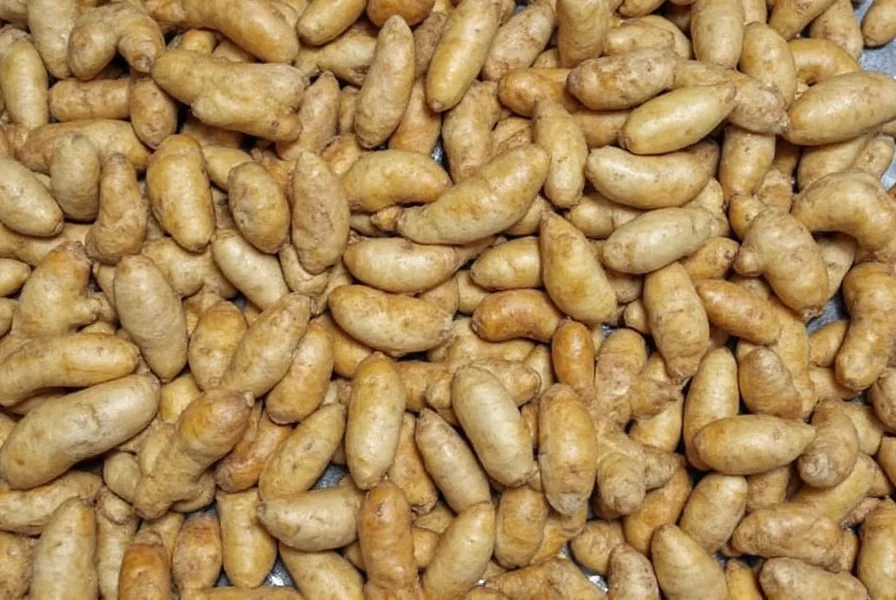When exploring Thai ginger production, it's essential to understand that Thailand has developed specialized processing infrastructure for this valuable agricultural product. Unlike generic ginger processing operations, Thai facilities typically handle Zingiber cassumunar (commonly called plai in Thai) and Zingiber officinale varieties that thrive in Thailand's tropical climate and impart unique aromatic compounds.
Understanding Thai Ginger Varieties and Characteristics
Thailand cultivates several ginger varieties, each with distinct properties that influence processing methods. The most commercially significant types include:
| Ginger Variety | Local Name | Key Characteristics | Primary Processing Method |
|---|---|---|---|
| Zingiber officinale | Kha | Standard culinary ginger with sharp flavor | Drying, powdering, pickling |
| Zingiber cassumunar | Plai | Higher cineole content, medicinal properties | Steam distillation for essential oil |
| Boesenbergia rotunda | Krachai | Less pungent, used in traditional medicine | Extraction for supplements |
These varieties require different processing approaches to preserve their unique chemical profiles. Thai processing facilities have developed specialized techniques that maintain the volatile compounds responsible for ginger's distinctive aroma and therapeutic benefits.

Thai Ginger Processing Facility Operations
Authentic Thai ginger manufacturing follows a standardized sequence of operations designed to maximize quality while minimizing waste. The typical processing workflow includes:
- Harvesting and transportation: Ginger rhizomes are harvested at optimal maturity (typically 8-10 months) and transported to processing facilities within 24 hours to prevent deterioration
- Washing and cleaning: Facilities use multi-stage washing systems with potable water to remove soil while preserving the ginger's natural protective layer
- Sorting and grading: Workers categorize ginger by size, color, and quality characteristics using both visual inspection and digital sorting technology
- Processing stage: Depending on the end product, ginger undergoes peeling, slicing, drying, extraction, or preservation
- Quality control: Multiple checkpoints throughout the process verify moisture content, microbial safety, and active compound concentrations
- Packaging: Final products are packaged in food-grade materials with appropriate labeling for domestic and international markets
Quality Standards for Thai Ginger Products
Reputable Thai ginger processing facilities adhere to multiple quality frameworks. The Thai Department of Agriculture enforces specific standards for ginger products, while international facilities often maintain additional certifications:
- Thai Agricultural Commodity Inspection Act: Sets minimum requirements for moisture content (typically below 12% for dried products), purity, and absence of contaminants
- Good Manufacturing Practices (GMP): Required for facilities producing ginger for pharmaceutical or supplement use
- Organic certification: Many Thai ginger processors maintain USDA Organic, EU Organic, or Thai Organic certifications
- HACCP implementation: Critical for identifying and controlling food safety hazards throughout processing
When evaluating Thai ginger manufacturing operations, look for facilities that publish their quality control protocols and third-party testing results. The most reputable operations conduct regular testing for:
- 6-gingerol and 6-shogaol content (key bioactive compounds)
- Microbial contamination (total plate count, E. coli, salmonella)
- Heavy metal residues (lead, arsenic, cadmium)
- Pesticide residues
- Moisture content and water activity

Regional Production Centers in Thailand
Thai ginger processing facilities concentrate in specific regions where climate and soil conditions produce optimal ginger characteristics:
- Chiang Mai and surrounding northern provinces: Primary region for Zingiber cassumunar (Plai) production, with numerous facilities specializing in essential oil extraction
- Khon Kaen and northeastern region: Major center for Zingiber officinale processing, particularly for dried and powdered products
- Chanthaburi and eastern provinces: Known for specialty ginger varieties used in traditional medicine formulations
Each region has developed processing expertise aligned with the local ginger varieties. Northern facilities often incorporate traditional steam distillation methods passed down through generations, while eastern facilities may use more modern extraction technologies for medicinal applications.
Evaluating Reputable Thai Ginger Processing Operations
When researching Thai ginger manufacturing facilities, consider these verification factors to ensure you're working with legitimate operations:
- Check for valid business registration with the Thai Department of Business Development
- Verify facility registration with the Thai Food and Drug Administration (for edible products)
- Request documentation of quality control procedures and recent third-party test results
- Look for evidence of sustainable sourcing practices and fair labor standards
- Confirm the facility has export experience if purchasing for international markets
Be cautious of operations that cannot provide verifiable information about their processing methods or quality control measures. Authentic Thai ginger processing facilities take pride in their production standards and typically welcome inquiries about their methods.
Sustainability in Thai Ginger Processing
Modern Thai ginger manufacturing increasingly incorporates sustainable practices throughout the production chain:
- Water recycling systems that reduce consumption by 40-60% compared to traditional methods
- Utilization of ginger waste for biogas production or animal feed
- Solar drying technologies that reduce energy consumption
- Partnerships with local farmers through contract farming arrangements
- Soil conservation practices in ginger cultivation areas
These sustainability initiatives not only benefit the environment but often result in higher quality ginger products through more controlled growing and processing conditions.
Conclusion
Thai ginger processing facilities represent a specialized segment of Thailand's agricultural industry that combines traditional knowledge with modern food science. Understanding the different varieties, processing methods, and quality standards helps identify authentic operations that maintain the distinctive properties of Thai ginger. When evaluating potential suppliers, prioritize facilities that demonstrate transparency about their processing methods and quality control procedures, as these typically produce the most consistent and highest-quality ginger products.
Frequently Asked Questions
What's the difference between Thai ginger factories and regular ginger processing facilities?
Thai ginger processing facilities specialize in varieties native to Thailand like Zingiber cassumunar (Plai) and specific Zingiber officinale strains that have adapted to Thailand's climate. These facilities use processing methods optimized for the unique chemical profiles of Thai ginger varieties, which often contain different concentrations of bioactive compounds compared to ginger grown in other regions.
How can I verify if a Thai ginger processing facility follows proper quality standards?
Check for documentation of certifications from recognized bodies (Thai FDA, GMP, organic certifications), request recent third-party laboratory test results for key quality parameters, and verify business registration with the Thai Department of Business Development. Reputable facilities will readily provide this information and may offer virtual or in-person facility tours to demonstrate their quality control processes.
What are the main products created at Thai ginger processing facilities?
Thai ginger facilities typically produce dried ginger slices, ginger powder, ginger essential oil (particularly from Plai ginger), preserved ginger, ginger extracts for supplements, and sometimes value-added products like ginger tea blends. The specific product mix depends on the ginger variety processed and the facility's specialization.
Are there seasonal considerations when working with Thai ginger processing facilities?
Yes, ginger harvesting in Thailand typically occurs between October and February, with peak processing happening November-January. Facilities may have limited fresh ginger availability outside this window, though many maintain storage capabilities for year-round processing. Some facilities specialize in off-season production using controlled environment agriculture techniques.











 浙公网安备
33010002000092号
浙公网安备
33010002000092号 浙B2-20120091-4
浙B2-20120091-4